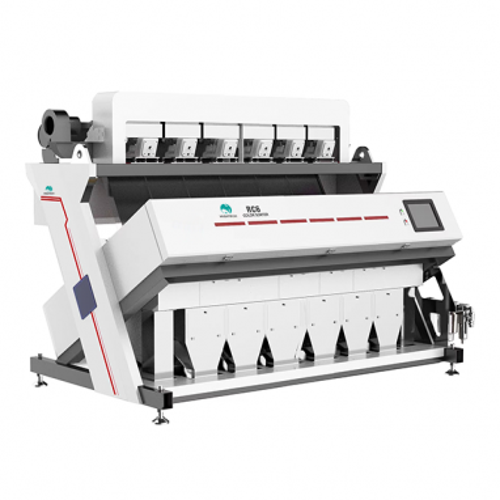How Does a Plastic Color Sorting Machine Work? A Comprehensive Guide by Htsorter
/ /Plastic recycling and manufacturing industries demand high-purity material outputs, and HTsorter’s advanced plastic colour sorting machine series is at the forefront of this technological revolution. Combining CCD imaging, laser plastic sorting machine for impurity removal, and AI-driven precision, our machines redefine efficiency in plastic processing. Here’s an in-depth look at their working principles and industry-leading features.

1. Core Technology of HTsorter’s Plastic Color Sorting Machine
HTsorter integrates three cutting-edge technologies to achieve unparalleled sorting accuracy:
①High-Resolution CCD Imaging:
- Utilizes 5000+ pixel CCD sensors to detect color variations as subtle as 0.01mm, ideal for separating mixed-color PET, PVC, and PP flakes.
- Dual visible-light cameras capture multi-angle images for precise color differentiation (e.g., distinguishing light blue from transparent PET).
②Laser-Based Impurity Detection:
- Employs spectral analysis and infrared lasers to identify non-plastic contaminants like metals, glass, or organic residues, achieving 99.9% impurity removal.
③AI-Driven Sorting Algorithms:
- Combines deep learning and 3D modeling to analyze material texture, shape, and density, enabling simultaneous sorting of complex mixtures (e.g., unwashed vs. cleaned bottles).

2. Step-by-Step Workflow
Stage 1: Material Feeding
Mixed plastics enter through a vibrating feeder, ensuring uniform distribution for accurate detection.
Stage 2: Multi-Sensor Scanning
- Color Sorting: CCD cameras identify color deviations (e.g., green vs. clear PET).
- Impurity Detection: Lasers detect foreign materials invisible to the human eye.
- Material Analysis: AI algorithms classify plastics by polymer type (PET, PP, ABS, etc.).
Stage 3: Real-Time Ejection
Defective particles are removed by high-speed air valves, with a response time of <1 millisecond.
Stage 4: Output Segregation
Purified plastics and rejected waste are collected separately, ready for recycling or reuse.


3. Key Applications of HTsorter’s Machines
1. Recycled Plastic Purification:
- Sort mixed post-consumer plastics (e.g., bottles, caps, and flakes) into monochromatic streams.
- Achieve food-grade PET purity for bottle-to-bottle recycling.
2. Industrial Scrap Processing:
- Remove contaminants from automotive or electronic waste plastics.
3. Quality Control in Manufacturing:
- Ensure raw material consistency for injection molding (e.g., ABS/PP pellets).
4. HTsorter’s Competitive Advantages
- Multi-Material Compatibility: Handles PET, PVC, PP, and hybrid materials (e.g., metal-plastic composites).
- Global Certifications: ISO 9001 and ISO 14001 certified, trusted by clients in 80+ countries.
- Smart Maintenance: Modular design and self-diagnostic systems reduce downtime.
5. Market Leadership & Innovation
HTsorter ranks among Europe’s top recycled plastic sorting machine providers, with solutions tailored to emerging regulatory demands (e.g., EU circular economy targets). Our laser plastic sorting machine for impurity removal series addresses critical challenges like:
- Microplastic Contamination: Detect particles as small as 0.3mm.
- Cost Efficiency: Reduce labor costs by 30–50% compared to manual sorting.
Why Choose HTsorter?
- Custom Solutions: From desktop models to large-scale industrial systems.
- End-to-End Support: 24/7 technical service and spare parts supply.